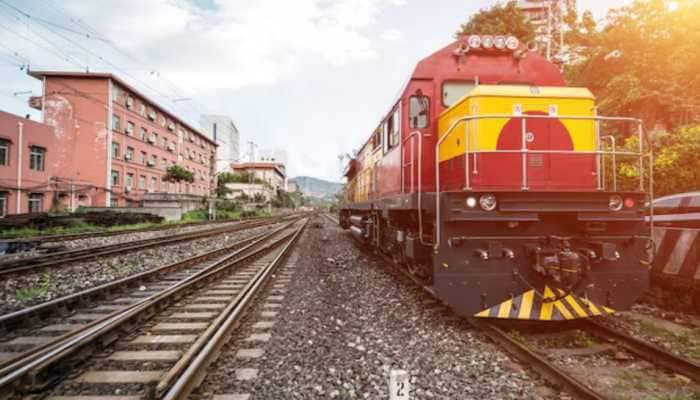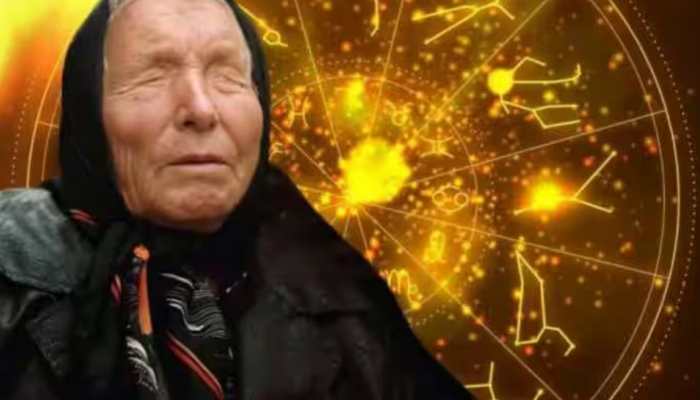Chandrayaan- 3 Launch Today: Here's All You Need To Know About ISRO’s Daring Moon Mission
The success of Chandrayaan 3 would see India enter an elite club of nations achieving such a feat, the others being the United States, China and the former Soviet Union.
Trending Photos
)
Sriharikota: The Indian Space Research Organisation (ISRO) is gearing up for the much-awaited launch of the country's third moon mission 'Chandrayaan-3' on Friday (July 14, 2023). As scheduled, the third lunar mission will be launched at 2:35 PM IST from the Satish Dhawan Space Centre, Sriharikota. "LVM3M4-CHANDRAYAAN-3 MISSION: The countdown leading to the launch (Friday- July 14) at 14.35 hrs has commenced," ISRO said in a social media post.
LVM3 M4/Chandrayaan-3 Mission:
The countdown leading to the launch tomorrow at 14:35:17 Hrs. IST has commenced.
Curtain raiser: https://t.co/xn4nRucAMn — ISRO (@isro) July 13, 2023
With the planned launch of Chandrayaan-3, the ISRO is going to make its second attempt to land a spacecraft on the moon. Earlier in 2019, due to some unfortunate circumstances that had emerged during the last stage of the descent, Chandrayaan-2’s lander and rover crashed on the moon’s surface.
However, with this mission, the ISRO will be attempting to cross new frontiers by demonstrating a soft landing on the lunar surface by its lunar module and demonstrating roving on the lunar terrain. A successful mission would see India enter an elite club of nations achieving such a feat, the others being the United States, China and the former Soviet Union.
When Is The Soft-Landing?
The LVM3-M4 rocket, which has been dubbed as 'Fat Boy' by the ISRO scientists for its ability to carry heavy payload, would carry Chandrayaan-3 on India’s ambitious moon mission and, if things go as planned, the soft landing of the spacecraft will take place in late August. The mission is expected to be supportive of future interplanetary missions.
Chandrayaan-3 mission consists of an indigenous propulsion module, a lander module and a rover with the objective of developing and demonstrating new technologies required for inter-planetary missions. Friday's mission is the fourth operational flight of LVM3 which aims to launch the Chandrayaan-3 spacecraft into a Geo Transfer Orbit.
The LVM3 vehicle has proved its versatility to undertake most complex missions including injecting multiple satellites, and interplanetary missions among others. It is also the largest and heaviest launch vehicle ferrying domestic and international customer satellites, ISRO said.
Chandrayaan-3 mission:
The ‘Launch Rehearsal’ simulating the entire launch preparation and process lasting 24 hours has been concluded.
Mission brochure: https://t.co/cCnH05sPcW pic.twitter.com/oqV1TYux8V — ISRO (@isro) July 11, 2023
All About Chandrayaan - India’s Lunar Expedition
As the scientific community is waiting with bated breath aiming for the successful third edition of India's moon mission, Chandrayaan-3 here is a quick look at how the country's lunar expedition evolved over the years.
Chandrayaan-1
The Chandrayaan programme was conceived by the Government of India and formally announced by former Prime Minister, the late Atal Bihari Vajpayee on August 15, 2003. Subsequently, the hard work of the scientists paid off when the maiden mission onboard ISRO's trusted PSLV-C 11 rocket lifted off on October 22, 2008.
According to the Indian Space Research Organisation, PSLV-C11 was an updated version of the standard configuration of a PSLV. Weighing 320 tonnes at lift-off, the vehicle used larger strap-on motors to achieve higher payload capability.
It carried 11 scientific instruments built in India, the United States of America, the United Kingdom, Germany, Sweden, and Bulgaria.
Noted scientist Mayilsami Annadurai from Tamil Nadu led the project as the Mission Director of the Chandrayaan-1 mission.
The spacecraft was orbiting around the moon at a height of 100 km from the lunar surface for chemical, mineralogical and photo-geologic mapping of the moon. While the mission achieved all the desired objectives, the orbit of the spacecraft was further raised to 200 km in May 2009, months after the launch. The satellite made over 3,400 orbits around the moon, more than what was expected by the ISRO team, and the mission finally concluded as the space agency's scientists declared communication was lost from the spacecraft on August 29, 2009.
The Vikram Sarabhai Space Centre, Thiruvananthapuram designed and developed the PSLV-C11.
Chandrayaan-2
Buoyed by the success, Chandrayaan-2 was conceived as a more complex mission by ISRO as it carried an orbiter, lander (Vikram) and rover (Pragyan) to explore the unexplored South Pole of the moon. After the lift-off on July 22, 2019, Chandrayaan 2 was successfully inserted into a lunar orbit on August 20 the same year.
Every move of the spacecraft was precise as the Lander 'Vikram' successfully got separated from the Orbiter in preparation for the landing on the lunar surface. After circling the moon at an altitude of 100 km, the descent of the lander was as planned and it was normal up to an altitude of 2.1 km. However, the mission met with an abrupt end as scientists lost communication with Vikram, named after the father of India's space programme, the late Vikram Sarabhai.
The Chandrayaan-2 mission failed to achieve the desired soft landing on the moon's surface, leaving the ISRO team dejected. Images of an emotional then ISRO Chief K Sivan being consoled by Prime Minister Narendra Modi who was at the ISRO headquarters to witness the rare feat, still remain vivid in the memory of many.
Chandrayaan 2 mission was aimed at expanding the lunar scientific knowledge through a detailed study of topography, seismography, mineral identification and distribution, surface chemical composition, and thermo-physical characteristics of topsoil, leading to a new understanding of the origin and evolution of the moon.
Friday's Chandrayaan-3 mission follows the Chandrayaan-2 which is aimed at mastering the soft landing on the surface of the moon. A successful landing on the lunar surface would make India only the fourth country to achieve the feat after the United States, China, and the former Soviet Union.
Stay informed on all the latest news, real-time breaking news updates, and follow all the important headlines in india news and world News on Zee News.
Live Tv







)
)
)
)
)
)
)
)
)
)
